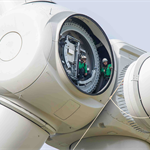[Article] Tackling the House’s Biggest Energy User the Occupant
Energy Disrupter
In many parts of the country, energy efficiency programs are not delivering energy savings as promised. There are several factors that may explain this, and I’m sure we can debate most of them, but there is one factor that is not debatable—buildings do not use energy; people do. Energy efficiency is what we as energy professionals do to a building—we insulate, air seal, install Energy Star-rated appliances and high-efficiency heating systems, and so on. The most difficult part of our work is not so much energy efficiency as it is energy conservation.
The Energy Coordinating Agency (ECA) in Philadelphia, where I work as a training director, is a regional leader in energy efficiency retrofits for existing residential properties. In its 35-year history, ECA has weatherized close to 44,000 homes and saved close to $275 million for low-income families in Pennsylvania and Delaware. We’ve learned a few things over the years about the importance of the people we serve (see “ECA Case Study”).

Jackie Robinson, one of ECA’s BPI-certified energy analysts, provides energy conservation education to homeowner Marlena Guttman. (ECA)
Energy conservation is the responsibility of the occupant. In order to improve energy savings as promised, we must be able to marry energy efficiency technology with energy conservation measures. People use energy—not buildings. Say for example that we install a programmable thermostat, but the occupants don’t fully understand how it works or their role in operating the device. The occupants are sleeping on the second floor in the winter, and it gets too hot at night. By habit, they will open a window. The work we did to make the building energy efficient is for naught; the occupants are now heating the neighborhood outside. For sure they will complain that all the work we did really didn’t save a lot of energy and money. Hence the need for occupant education.
ECA Case Study
To illustrate how ECA works with the customer to save energy, here is a brief case study.
Ms. Atia came to one of ECA’s energy centers requesting help with her heating bills and some repairs in her house. She met Maddi O., a case worker at the energy center who listened to her problems. First Maddi asked Ms. Atia a few questions regarding her income, her current energy bills, and the repairs she believes she needs. Maddi produced documentation based on the questions she asked Ms. Atia. Once Maddi determined that Ms. Atia was eligible for services, she forwarded the paperwork to ECA’s intake specialist Diana P. Diana called Ms. Atia to set up an appointment for ECA to send an energy analyst to her home. (Maddi, Diana, and all energy center case workers and ECA intake specialists took our courses in effective communication and occupant education. Notice we do not use the word audit. To many low-income homeowners that word has a negative connotation and can have a negative impact on their experience with ECA.)
Ms. Atia came to one of ECA’s energy centers requesting help with her heating bills and some repairs in her house. She met Maddi O., a case worker at the energy center who listened to her problems. First Maddi asked Ms. Atia a few questions regarding her income, her current energy bills, and the repairs she believes she needs. Maddi produced documentation based on the questions she asked Ms. Atia. Once Maddi determined that Ms. Atia was eligible for services, she forwarded the paperwork to ECA’s intake specialist Diana P. Diana called Ms. Atia to set up an appointment for ECA to send an energy analyst to her home. (Maddi, Diana, and all energy center case workers and ECA intake specialists took our courses in effective communication and occupant education. Notice we do not use the word audit. To many low-income homeowners that word has a negative connotation and can have a negative impact on their experience with ECA.)
Ryan R. was assigned to do the energy analysis for Ms. Atia. When Ryan arrived at Ms. Atia’s house he introduced himself and asked if he could come in to do the energy analysis. At this point Ms. Atia was very pleased with how ECA handled her requests and was comfortable with allowing Ryan to enter her home. (Ryan was observing various visual signs regarding Ms. Atia’s home. He noticed that there was a lot of clutter and several religious pictures and articles in the living room. At this point he knew very well how to work with this customer due to his training. It should be noted that Ryan has over 8 years of experience in energy analysis.) Ryan proceeded with the analysis, having Ms. Atia accompany him. Ryan explained every task he was completing. Once he completed his analysis, he sat at the kitchen table with Ms. Atia to let her know what he discovered and what he was going to recommend to correct many of her issues. As he was leaving, Ms. Atia thanked him for coming out and helping her with her problems.
Back at ECA Ryan wrote the prescription for what needed to be done regarding Ms. Atia’s weatherization. After talking with the intake specialist they determined that Ms. Atia was eligible for LIHEAP cash assistance for her energy bills, a heater tune up, BSRP (basic supplemental repairs), and weatherization. Diana called Ms. Atia to inform her what she was eligible for and to set up an appointment to begin the work. Upon arrival the crew chief Arron R. walked Ms. Atia through the process and the work that was being done. As they were leaving Ms. Atia thanked Arron R. and gave him a hug. The final step was the Quality Control Inspection.
Veronica C. did the final inspection and all the work was done perfectly. They sat down at the kitchen table and Veronica began explaining Ms. Atia’s responsibility for energy conservation. In her enthusiasm, while we normally pick 3 measures for the customer, Ms. Atia picked 4 measures that she would attempt to implement: wear sweaters or sweatshirts in winter while in her home, wear loose-fitting and light-colored clothing during summer while in her home, close her drapes during peak heat time during the summer, and use more blankets while sleeping in the winter and the thermostat is turned down. Veronica estimated that Ms. Atia would save 21.2% on her energy use. (It should be noted that this work was done in January when it was extremely cold. Ms. Atia noticed the difference in comfort immediately. Ms. Atia then hugged Veronica and thanked her several times. Needless to say the weatherization experience was very positive. It should also be noted that not every client’s experience is this positive; some clients expect more to be done for them, such as window and door replacement.)
Effective Communication
Where does occupant education begin, and who delivers it? Occupant education begins with the intake person and is delivered by everyone involved in the weatherization process. At ECA, we emphasize effective communication from the intake person to the final inspection.
Research conducted by Albert Mehrabian, Professor Emeritus of Psychology at UCLA, shows that people pay attention to what you are trying to communicate in three ways. Your words count for 7%; your tone of voice counts for 38%; and your body language counts for 55%. Therefore, the intake person must pay attention to the customer’s tone of voice as well as the customer’s words. Energy auditors, crew chiefs, installers, and quality control inspectors (QCIs) must pay attention to the customer’s body language, tone of voice and words in that order. Everyone who communicates with the customer must use the same terminology, be concise, and be very clear as to what he or she is trying to convey. Your overall goal is to build trust.

ECA’s Thomas Flaherty and a colleague at a community event. (ECA)

Education is the key to lasting energy efficiency gains. (ECA)
Respect
It is highly important to respect the customer’s culture. Inadvertently we may say or do something that can be very offensive, and that can have a negative effect on the customer’s entire weatherization and energy efficiency experience. For example, you should never schedule work at a Jewish family’s house after sundown on Friday or on Saturday, as Saturday is the Jewish Sabbath. Or if you see two refrigerators in a Jewish family’s house, think twice before you tell them that they could save energy if they had only one Energy Star-rated refrigerator. Some Jewish families observe Kosher, where dairy products are kept separate from meat products. To give another example, people in Asian cultures remove their shoes at the front door; they don’t wear shoes in the house. But to do the work we do, we have to wear shoes. In this case you can explain to the customer why you have to wear shoes, but you can ask permission to wear booties over your shoes. In almost every case, this would be acceptable. The key here is that you asked and respected their culture. The purpose of respecting your customers’ culture, like that of effective communication, is simply to gain your customers’ trust, so that when you get to the energy conservation measures, they will pay attention.

The weatherization crew and crew chief should explain what they are doing and why. (ECA)
Explain the Process
It is important to include the customer in the energy audit and the weatherization process. Keep in mind that most of the work we do is invisible to the customer. Energy auditors should explain step by step what they are doing and why they are doing it. The weatherization crew and crew chief should also explain what they are doing and why. All of these steps—effective communication, respect for your customers’ culture, and explaining the weatherization process—are intended to make your customers comfortable with what you are doing to their house, and to earn their trust. If you succeed, they will pay attention to the tips for energy conservation that you are about to explain.
Energy Conservation Tips
Consumers are given the tip sheet below, as well as information on energy and cost savings based on the percent energy saved (see Table). (Savings data has been validated by PECO Energy, an Exelon Company.)
Energy Conservation Tips Handout
- Close blinds and/or shades during peak heat times in the summer.
- Open blinds and/or shades in winter to let the sun heat your house.
- During the night while sleeping, adjust thermostat for low energy use. Air conditioner: 76–78°F; Heating: 55–60°F.
- Wear a comfortable sweatshirt or sweater in the house during winter.
- Wear light-colored loose clothing in the house during summer.
- When you go out, adjust the thermostat for low energy use.
- Use a fan to keep air moving in hot weather.
- In cold weather use more blankets or a down comforter while sleeping.
- Use low-flow showerheads and aerators for faucets.
- Set your water heater at 120°F.
- Use cold-water detergents when washing clothes.
- Make certain your dryer vents are clear and free from lint.
- Change your furnace filter at the beginning of every season.
- Remove any obstructions from heater and
air conditioner vents and return air vents. - Turn off the TV when no one is watching.
Getting Started
Here are some simple steps you can take as a home performance professional to begin teaching your customers, “Your house doesn’t use energy; you do.”
Tell your customers: During the heating season, set your thermostat to 66–68ºF and set it to 76–78ºF in the summer. Tell them how much energy and money this will save over the course of the year. Tell them to make these changes gradually, and to dress appropriately for optimum comfort.
Here’s a tip that almost every customer will take. Explain that the refrigerator is the appliance that uses the most energy by far. Hopefully the customer’s old refrigerator was replaced with an Energy Star-rated refrigerator. Explain that a full refrigerator—not a “dense packed” one though—is more efficient than an empty one. Have the customer fill empty gallon milk cartons with water and put them in the refrigerator. He or she will enjoy a double benefit—a more energy-efficient refrigerator and cold water to drink.
Our QCIs at ECA have a document that lists all our energy conservation tips (see “Energy Conservation Tips”). We know that our customers will not follow all of them. Remember: We are trying to change behavior, which is much harder than dense packing a wall. Based on what the QCI observes regarding the house and the customer’s profile, he or she picks three tips that the customer is highly likely to take. The QCI checks off the three recommended tips and has the customer sign the sheet. The QCI gives the customer a copy and keeps a copy for our records.
As a result of applying energy efficiency technologies along with occupant education on energy conservation, the occupant, with ECA’s help, realizes an average 25% reduction in energy use, according to the Philadelphia Gas Works.
This article was supported with funding from DOE’s Weatherization Assistance Program.



















